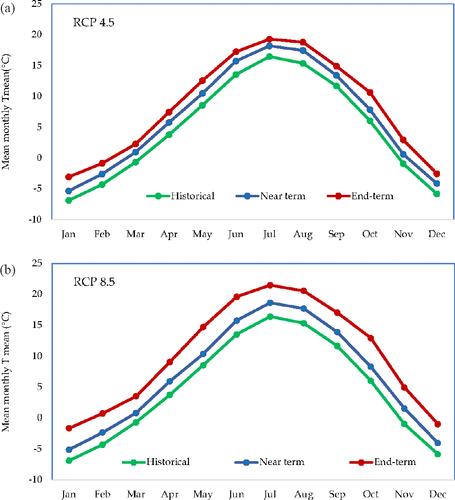Reduced and Earlier Snowmelt Runoff Impacts Traditional Irrigation Systems
Abstract
Seasonal runoff from montane uplands is crucial for plant growth in agricultural communities of northern New Mexico. These communities typically employ traditional irrigation systems, called acequias, which rely mainly upon spring snowmelt runoff for irrigation. The trend of the past few decades is an increase in temperature, reduced snow pack, and earlier runoff from snowmelt across much of the western United States. In order to predict the potential impacts of changes in future climate a system dynamics model was constructed to simulate the surface water supplies in a montane upland watershed of a small irrigated community in northern New Mexico through the rest of the 21st century. End-term simulations of representative concentration pathways (RCP) 4.5 and 8.5 suggest that runoff during the months of April to August could be reduced by 22% and 56%, respectively. End-term simulations also displayed a shift in the beginning and peak of snowmelt runoff by up to one month earlier than current conditions. Results suggest that rising temperatures will drive reduced runoff in irrigation season and earlier snowmelt runoff in the dry season towards the end of the 21st century. Modeled results suggest that climate change leads to runoff scheme shift and increased frequency of drought; due to the uncontemporaneous of irrigation season and runoff scheme, water shortage will increase. Potential impacts of climate change scenarios and mitigation strategies should be further investigated to ensure the resilience of traditional agricultural communities in New Mexico and similar regions.


 求助内容:
求助内容: 应助结果提醒方式:
应助结果提醒方式:


